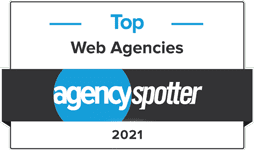
Companies, whether newly-launched or well-established, need to take the time to drill down and construct their Mission, Vision, and other brand statements, for two reasons. Not only does this help inform their marketing agency (ahem), but this informs and guides all aspects of what they do.
According to Minneapolis consultants Martini & Associates, “Too often, those organizations that choose not to do this find themselves the ‘victims of change’ rather than the ‘architects of change.’“ Spend the time and effort to construct a comprehensive branding plan, and it may save you time, confusion, and effort lost in pursuing the wrong things.
Cazarin Interactive recently went through this process and we’d like to share some of our results with you.
Here are four types of brand statements, with Cazarin’s examples included.
1 ) Brand Promise
What the company commits to the people who interact with it. It’s not a description of what a company does in a literal sense; it’s a description of the company’s character.
Examples:
The NFL: “To be the premier sports and entertainment brand that brings people together, connecting them socially and emotionally like no other.”
Coca-Cola: “To inspire moments of optimism and uplift.”
Virgin: “To be genuine, fun, contemporary, and different in everything we do at a reasonable price.”
Cazarin Interactive: “To be a genuine agency that specializes in building relationships not only between ourselves and the client—but between the client and their customers.”
2 ) Mission Statement
A written declaration of an organization’s core purpose and focus that normally remains unchanged over time. Properly-crafted mission statements (1) serve as filters to separate what is important from what is not, (2) clearly state which markets will be served and how, and (3) communicate a sense of intended direction to the entire organization. Entrepreneur Magazine calls a company’s mission statement “a key tool that can be as important as your business plan.”
Examples:
Google: “To organise the world’s information and make it universally accessible and useful.”
Bristol-Myers Squibb: “To discover, develop and deliver innovative medicines that help patients prevail over serious diseases.”
Dow Chemical: “To constantly improve what is essential to human progress by mastering science and technology.”
Disney: “The mission of The Walt Disney Company is to be one of the world’s leading producers and providers of entertainment and information. Using our portfolio of brands to differentiate our content, services and consumer products, we seek to develop the most creative, innovative and profitable entertainment experiences and related products in the world.”
Target: “Our mission is to make Target the preferred shopping destination for our guests by delivering outstanding value, continuous innovation and an exceptional guest experience by consistently fulfilling our Expect More. Pay Less.® brand promise.”
Cazarin Interactive: “To help our clients understand and solve their marketing challenges with customized solutions, achieving client-specified goals.”
3 ) Vision Statement
An aspirational description of what an organization would like to achieve or accomplish in the mid-term or long-term future. It is intended to serve as a clear guide for choosing current and future courses of action. As Lewis Carroll said, “If you don’t know where you are going, any road will get you there.”
Examples:
Microsoft: “Empower people through great software anytime, anyplace, and on any device.”
Amazon: “Our [Amazon’s] vision is to be earth’s most customer-centric company; to build a place where people can come to find and discover anything they might want to buy online.”
World Wildlife Fund: “We seek to save a planet, a world of life. Reconciling the needs of human beings and the needs of others that share the Earth.”
Disney: “To make people happy.”
Cazarin Interactive: “To be a premier digital marketing agency where both employees and clients enjoy working together in a creative environment filled with happy people.”
4 ) Customer Value Proposition
A business or marketing statement that describes why a customer should buy a product or use a service. It is specifically targeted toward potential customers rather than other constituent groups such as employees, partners or suppliers.
Examples:
Pinterest: “A few (million) of your favorite things.”
Fundly: “Raise money for anything. Fundly is fast, easy and has no raise requirements.”
Thumbtack: “Accomplish your personal projects.”
iTunes: “You’ve never been so easily entertained.”
Cazarin Interactive: “A unique blend of design, creative, and technological solutions that catapult brands both large and small toward specified goals.”
Now, how does a team determine these statements? And what do you do with them once you have them?
There are many ways to arrive at these nuggets, from locking yourselves in a conference room for 2 hours, to a 3-day dig-deep consulting session. Whether you use organizational effectiveness experts to help you develop these statements and create a plan for how to live them out, or turn to Cazarin to provide guidance as your organization begins these important discussions, it’s a step that cannot be skipped.
Need to make this a priority for your company?
Get Started ›





